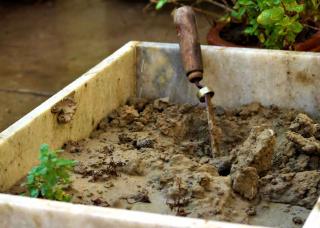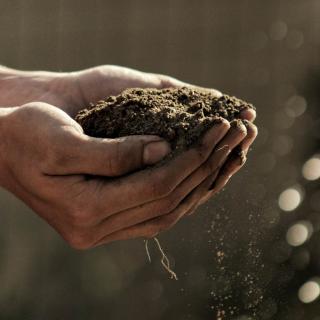

Topdressing means spreading a fresh layer of rich soil mix directly atop the ground. This gives plants the organic matter they need to grow best.
Top dressing is for lawns, plants in large containers or pots, along edges, in raised garden beds and even under trees that like rich soil.
You can also use compost, which has fertilizing properties and will cover the needs of your plants for at least a year.
Read also:
Topdressing is a technique or practice where a layer of fresh, extra soil is added on top of existing soil. The goal is to rejuvenate soil and replenish its nutrients.
“Topdressing” is also the noun that designates the material or amendment itself (usually soil mix or sand).
Topdressing a plant or lawn is a good way to care for it. It helps reduce the need for frequent fertilizing.
Furthermore, there are positive side effects:
Unlike repotting, topdressing is softer on the plant. It won’t suffer any form of transplant shock.
 Circumstances when topdressing is expected
Circumstances when topdressing is expectedTopdressing usually comes into play when repotting isn’t possible.
The following situations are typical topdressing applications:
For lawns and growing beds in shallow soil, the question is clear cut.
For houseplants, container gardens, raised beds and the like, it’s more a question of convenience.
Ideally, topdress with these weather conditions:
The goals is to spread a very thin layer of soil mix across the entire surface of the lawn.
Although it’s possible to simply throw the soil around with a wide movement of the arm (as if you were broadcast sowing seeds), there are other techniques that produce better results with specific equipment.
Some indoor plants require rather large pots, such as indoor banana or citrus trees. Since repotting them is almost impossible due to size, the next best option is to topdress them.
 Bring the pot over an easy-to-clean surface like tiles or spread a tarp under it.
Bring the pot over an easy-to-clean surface like tiles or spread a tarp under it.Usually a large plant will benefit from being topdressed every two years. You can also support growth with natural fertilizer such as fermented tea.
As long as there’s still space under the rim of the growing bed, you can topdress very easily simply by adding a thin layer of topdressing at the top.
Topdressing in such a manner is best repeated every three or four years. You can complement topdressing with a layer of plant mulch. Plant mulch is ideal for raised beds because it breaks down and continuously releases nutrients.
When the garden box is full, which may happen after 4 to 6 years, you’ll have to go for soil replacement. This is similar to what is described just above for topdressing houseplants.
There are a few points of caution regarding this technique.
Delicate hands – When rummaging around in pots, tools will often wound roots. This raises risks of infection and root rot. Use your hands to work the soil when working on houseplants.
Poor topdressing – the goal is to replenish nutrients. Best is to use rich materials like compost. Sometimes potting mix is too poor. For example, you shouldn’t use seedling potting mix because there are very few nutrients in it.
For most purposes, mature compost is the best topdressing.
Other possibilities include:
Sand – this is almost exclusively used as a lawn topdress, and then again mostly on golf turf. You may include it in your topdressing mix (up to a third) if you need to increase drainage, but don’t repeat it too often. Prefer coarse sand to fine sand. Never use sea sand which is salty. Only use river sand or quarry sand.
Manure – manure provides very rich nutrients. Depending on what the animals ate, though, you might notice weeds growing out of it (especially grasses).
Read also:
Topdressing is an excellent organic option to maintain your plants. You don’t need to add any chemical fertilizers because nutrients are replenished with fresh soil.
Topdressing a lawn is an interesting concept. Please explain how it is accomplished without smothering and killing the lawn in the process. Thank you.
Yes, it’s a great organic way of giving your lawn fresh nutrients to grow well. Here’s an article specifically about lawn topdress. Two parts to succeeding: first, do not add too much material. Second, rake or brush the lawn so new soil falls under and grass blades are brought up over it.
Sure thing! The key is quantity: spread it evenly and don’t put too much. Here’s a complete article about lawn topdress techniques.